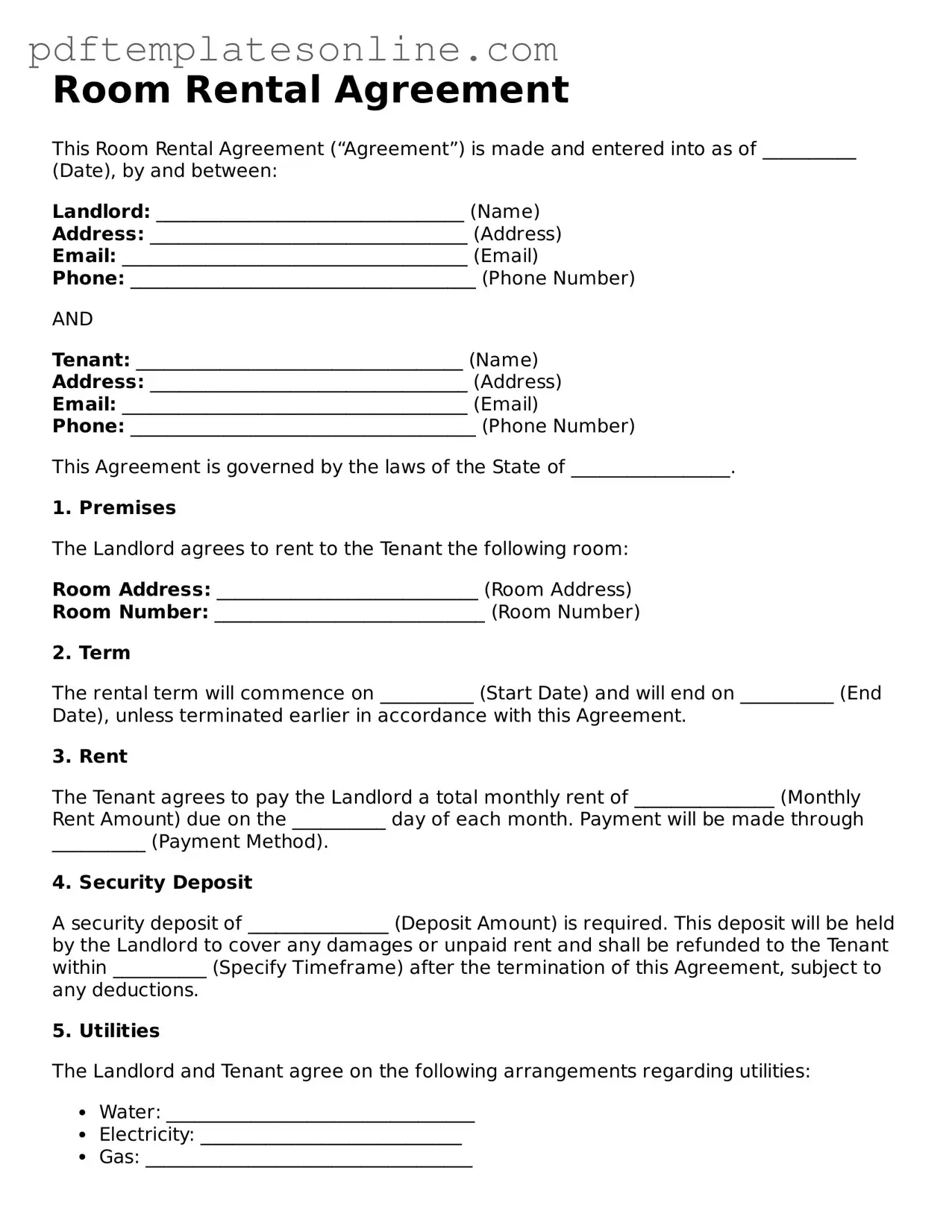When filling out a Room Rental Agreement form, individuals often overlook critical details that can lead to misunderstandings or legal complications. One common mistake is failing to include the full names of all parties involved. This oversight can create ambiguity about who is responsible for the terms of the agreement. It is essential that all tenants and landlords are clearly identified to avoid any disputes later on.
Another frequent error is neglecting to specify the rental period. Without a clear start and end date, both parties may have different expectations regarding the duration of the rental. This lack of clarity can lead to confusion about payment obligations and the timeline for vacating the premises.
Many people also forget to detail the rental amount and payment schedule. It is crucial to state the total rent due, how often it should be paid, and the accepted methods of payment. Omitting this information can result in late payments or disagreements about what was agreed upon.
In addition, some individuals fail to outline the security deposit terms. This includes the amount required, the conditions for its return, and any deductions that may apply. Not addressing these details can lead to disputes over the deposit when the rental period ends.
Another mistake is not including provisions for maintenance and repairs. It is important to clarify who is responsible for upkeep and how issues should be reported. Without these details, tenants may be left uncertain about their obligations, while landlords may face unexpected repair costs.
Lastly, people often overlook the importance of including rules and regulations regarding the use of the property. This can cover noise levels, pet policies, and other behavioral expectations. Clear guidelines help maintain a positive living environment and prevent conflicts between tenants and landlords.
